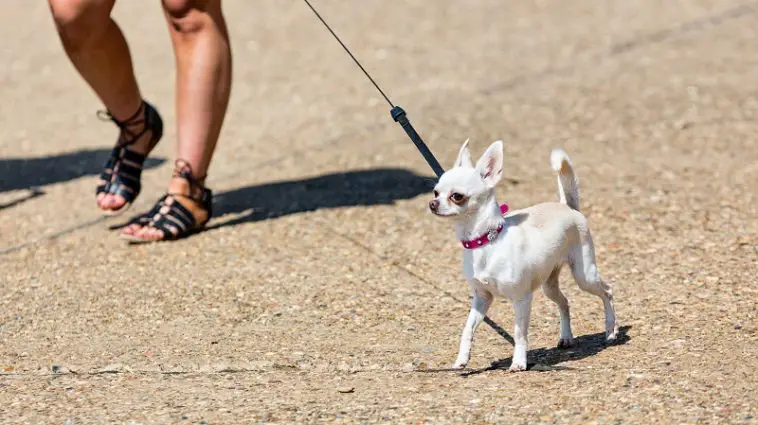Should you walk a dog with luxating patella?
Is your pet limping? Has it been diagnosed with luxating patella?
Then the question foremost on your mind would be ‘should you walk your pet?’ and ‘will your dog be able to bear daily walks without further degrading the joint or suffering from pain?’.
Often a dog with luxating patella walks with a limping gait. It might also stop, stretch its leg outward to pop the kneecap back, and resume walking again.
In this article, we will discuss:
- When Should Dogs with Luxating Patella Not Walk?
- How to Exercise a Dog with Luxating Patella?
- Does Luxating Patella Heal Itself?
- And more…
Should You Walk a Dog with Luxating Patella?
Yes, vets recommend low-impact exercises for dogs diagnosed with luxating patella. Walking your dog can prevent lameness and arthritis in grade 1 and 2 luxation. Surgery is recommended for grades 2, 3 and 4 luxation and 90% of dogs recover completely within 10 weeks of surgery.

If your dog has Grade 1 or 2 patella luxation, you can safely walk your dog and also do some low-impact exercises with him. This will help to strengthen the muscle around its knee to help hold the patella in place.
How much walking should your dog do?
To prevent over-exertion of the kneecap, you should bring your dog for a few shorter walks a day versus one long walk.
The goal of the walking and exercises is to help strengthen the quadriceps & gluteal muscle group, minimize any pain if any and to maintain hip flexibility.
Avoid high impact exercises and prolonged period of exertion as it may exacerbate your dog’s patellar luxation condition.
According to Dr. Tammy Hunter, DVM, patellar luxation predisposes the knee to other injuries, such as torn cruciate ligaments. Due to the weak knee caps, the stress of your dog’s body weight will negatively affect the hips, thigh and shin bones. As your dog gets older, it may develop arthritis and result in both decreased mobility and joint pain.
Here are some other benefits of daily walks for your dog diagnosed with grade I or II LP:
1. Prevent obesity and maintain a healthy weight
In obese dogs, the excess weight might further degrade the joints causing even more pain and lameness.
In addition to feeding it a healthy diet, you must exercise your pet regularly – at least 2 times a day. Even a tiny bit of excess weight in a small dog could cause its tendons, bones, and joints to twist and turn abnormally.
To prevent your dog from experiencing even more pain, try to maintain your dog’s weight in the normal range.
2. Delaying or preventing the onset of lameness and arthritis
Dogs with patellar luxation are often candidates for developing lameness or arthritis.
Walking is a low-impact activity that could delay and even prevent lameness in LP dogs. The activity keeps your dog’s joints supple and flexible and can prevent painful degradation of the popped kneecap.
In general, many vets advise low-impact exercise like walking for at least 30 minutes per day for dogs diagnosed with grade I and grade II LP.
Even grade III LP dogs could benefit from walking and many pet parents have prevented expensive (and oft needless surgery) with daily walking.
When Should Dogs with Luxating Patella Not Walk?

Dogs diagnosed with Grade IV luxating patella should not walk or run. Vets also recommend restricting their movements to prevent further degradation of the joint.
In grade IV LP, the kneecap slips and stays out of place permanently. This can make it very painful and difficult for your dog to bend its knee/s.
Surgery might help although, in some dogs, the condition could recur or, worse, it could shift to the other knee, necessitating surgery in both legs. This can be very expensive.
Some Grade II LP dogs may also be advised rest. In Grade II, the knee joint pops out and your dog might yelp, hold its leg up, stretch, and get the joint to slide back in place. It might then resume walking. Resting the joint could help prevent further wear and tear and might even encourage healing of patellar ligament.
What is Luxating Patella? What are its Causes?
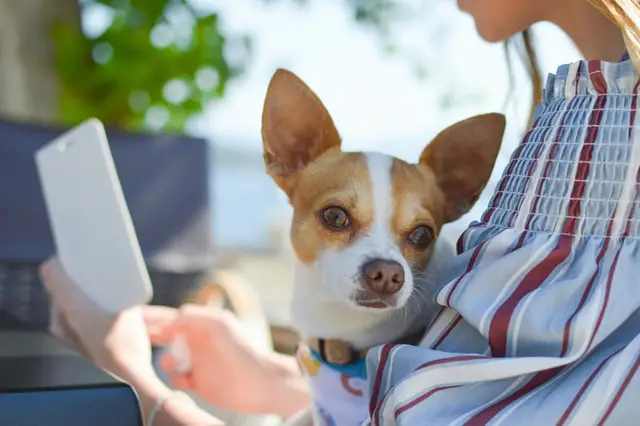
Dr. Tammy Hunter, DVM explains that the term luxating means ‘out of place’ or ‘dislocated’ and the term patella means kneecap. Therefore, luxating patella refers to a kneecap that moves out of its normal position.
Luxating patella is often a degenerative disease of the joints in dogs. It can occur in one leg or both the hind legs and is one of the leading causes of rear leg lameness in dogs.
Luxating patella can affect little puppies or it might show up in adult or senior dogs.
Causes of luxating patella include:
1. Breed specific
According to Dr. Hunter, many toy or small breed dogs have a genetic predisposition for a luxating patella. Examples of these breeds are:
- Maltese
- Chihuahua
- French Poodle
- Bichon Frise dogs
- Shih Tzus
- Yorkshire Terriers
2. Gender specific
LP is more common in female dogs than in males. Nearly 1.5 times more female dogs were known to suffer from this condition compared to male dogs.
3. Congenital
In some small dog breeds, the condition is congenital – present at birth. Often, the luxation may be 100% as against the knee cap popping in and out.
4. Trauma
Accidents and trauma can also cause the patella to be luxated in more than one directions.
5. Inherited disease
Luxating patella is usually inherited from the parent dogs. That is why breeders should prevent breeding the affected dog.
What are the Signs and Symptoms of Luxating Patella in Dogs?

As explained earlier, patella luxation (also called floating kneecap) occurs when the patella or the knee cap normally held together by tendons and tissues, moves in and out of its normal position.
In puppies, the trochlear groove in the femur bone allows the kneecap to slide in and out especially when the dog walks. This does not allow ridges to form normally which is why the dog’s knee cap keeps slipping out of the groove.
When this occurs, your pet might show the following signs and symptoms:
1. Lifting the leg off the ground
The affected dog might stop mid-gait and lift its leg off the ground.
2. Limping gait
Some dogs walk with a limp permanently.
3. Pain
Your dog might yelp in pain or might stop and lick the painful area.
Often the symptoms of LP come and go which makes it confusing. Some dogs walk normally for days but might suddenly start limping. This could make it difficult to diagnose the condition.
Does Luxating Patella Heal Itself?
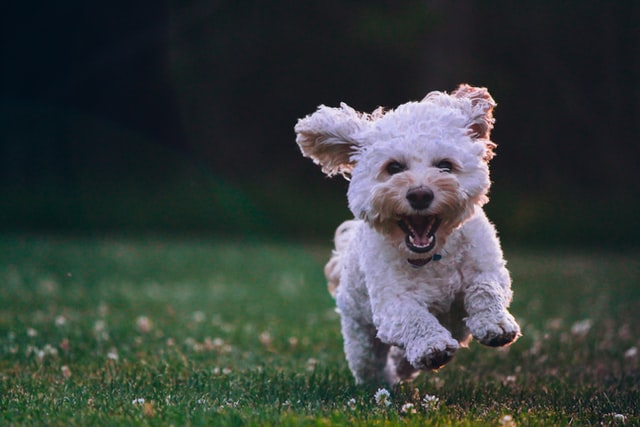
Luxating patella presents itself in four different grades and each one presents varying degrees of discomfort in your dog.
- In grade I, the kneecap only slips out when the vet manipulates it.
- In grade II, the knee cap pops out, your dog might yelp, stop, hold its leg up, adjust, and get it to slide back in as it continues walking.
- Grade III – the knee cap can slip out frequently enough to cause lameness.
- Grade IV – the Knee cap slips in and out making it extremely painful for your dog.
Luxating patella will never heal itself but for mild cases (grades I and II), most dogs won’t experience too much pain or discomfort and could lead fairly good lives. However, without proper nutrition, exercise, and supplements, the disease might progress to grade III or IV and could even turn into arthritis or lameness.
How to Exercise a Dog with Luxating Patella?
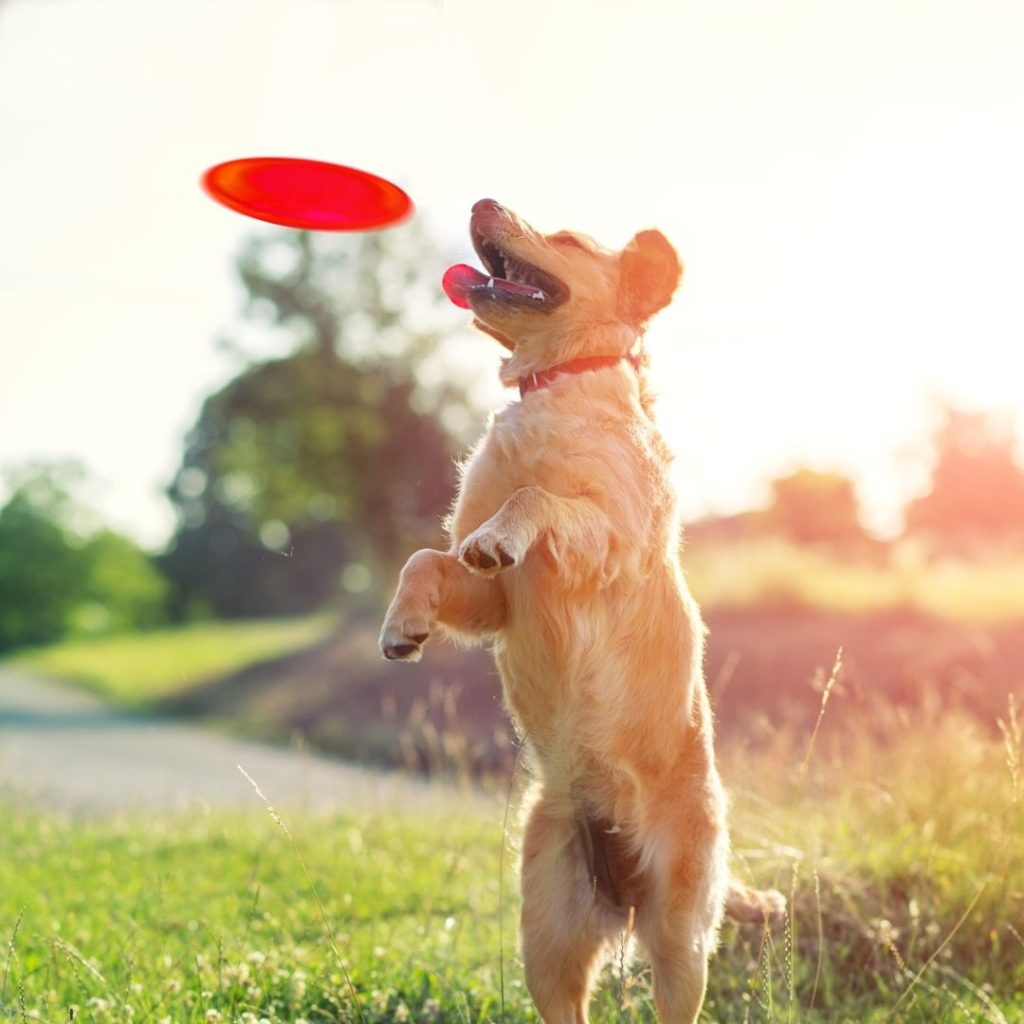
Now that we have answered the question ‘should you walk a dog with luxating patella?’ you know that the best exercise for such dogs is low–impact activity like walking.
Your vet is the best person to guide about the kind of exercises that could benefit your dog. These exercises will also vary in intensity and duration based upon the degree or grade of luxation. Most grade I and grade II LP dogs are allowed to indulge in low-impact exercise.
Here are some exercises that can benefit LP dogs:
Hydrotherapy
Hydrotherapy can help dogs with luxating patella in the following ways:
- Improves general fitness
- Increases stamina
- Develops muscle tone
- Strengthens muscles without potentially damaging effects of exercises done on the land.
Walking up and down the stairs
Many dogs benefit from low-impact climbing exercise such as walking up and down the stairs. You can make a little game out of it such as placing treats or playing hide-and-go-seek with your dog to get it climb the stairs. Encourage your kids to play with your dog too.
Avoid games or rough play between the affected dog and other healthy dogs.
What are the Best Supplements for Luxating Patella?
The best supplements for luxating patella in dogs are ones that contain the following ingredients:
- MSM or Methylsulfonylmethane – This is anti-inflammatory and antioxidant that occurs naturally. It also improves the uptake of essential nutrients and vitamins. Dogs with LP need 50 mg per 10 lb. of body weight.
- Glucosamine – This nutrient repairs damaged cartilage and can improve your dog’s range of motion. Many dog foods contain glucosamine which can benefit joint health in dogs. Raw diet like chicken legs are also a good source of glucosamine. This is why dogs with LP are known to do well on raw diet.
- Chondroitin – Chondroitin and glucosamine are building blocks for your dog’s cartilage. They work together to reduce aches and pain in arthritic and lame dogs and can considerably improve your pooch’s quality of life.
- SAMe – S-adenosylmethionine is another crucial joint manufacturing nutrient.
- Bromelain – This enzyme is found in many fruits like pineapples. It can strengthen damaged tissues and carry oxygen and vital nutrients for speeding up healing.
- Minerals – Calcium, zinc, and vitamin C are needed to form healthy bones.
- Yucca – This herb destroys toxins that stop formation of cartilage.
- Boswelia – this is an herbal pain-relieving herb that works like NSAIDs without their harmful side effects.
Check out our guide on the best luxating patella dog supplements.
When to Consider Surgery for Luxating Patella?
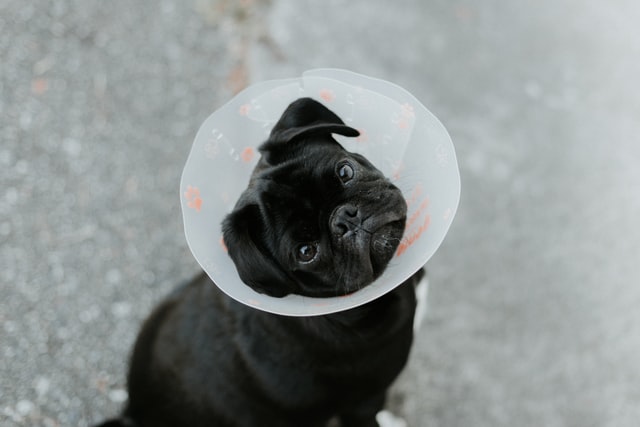
For LP grades II to IV, some vets recommend luxating patella surgery. You could avoid surgery for grade II and grade III by exercising your pet and feeding it the aforementioned supplements.
There are different types of patella surgery depending upon the technique used. The goal in each type is the same: to reconstruct the bone and soft tissues so they realign with the leg and prevent the knee cap from popping out.
Nearly 90% of dogs do very well with surgery. Most dogs recover fully within 10 weeks. In the remaining 10% dogs, there is a chance of patellar re-luxation. Surgery also could increase your dog’s risk to tibial tuberosity or femoral fractures.
Cost of the patella surgery can be anywhere between $1000 and $3000 per dislocated kneecap.
FAQs on Should You Walk a Dog with Luxating Patella?
1. Can dogs live with Luxating patella?
Many small dogs live fairly good lives with Grades I and II LP. For grades III and IV, there is a high chance of developing lameness and/or osteoarthritis as the disease progresses. Eventually such dogs may need surgical correction.
2. How common is luxating patella?
Nearly 7% of puppies are diagnosed with LP. These mainly include small dog breeds like Chihuahuas, poodles, corgis, Yorkshire terriers, Dachshund, Boston terriers, etc.
Conclusion – Should You Walk a Dog with Luxating Patella?
Yes, vets recommend low-impact exercises like walking for most dogs diagnosed with patella luxation.
Walking is very important as it could prevent obesity which is known to further degrade the joints. The low-impact exercise could also prevent lameness and arthritis in grades I and II LP dogs.
Surgery is often the only option for dogs with Grades III and IV Luxating patella. 90% of dogs recover completely within 10 weeks of surgery.
In addition to walking, you can also feed your dog joint-strengthening luxating patella supplements. This can greatly improve its quality of life.
